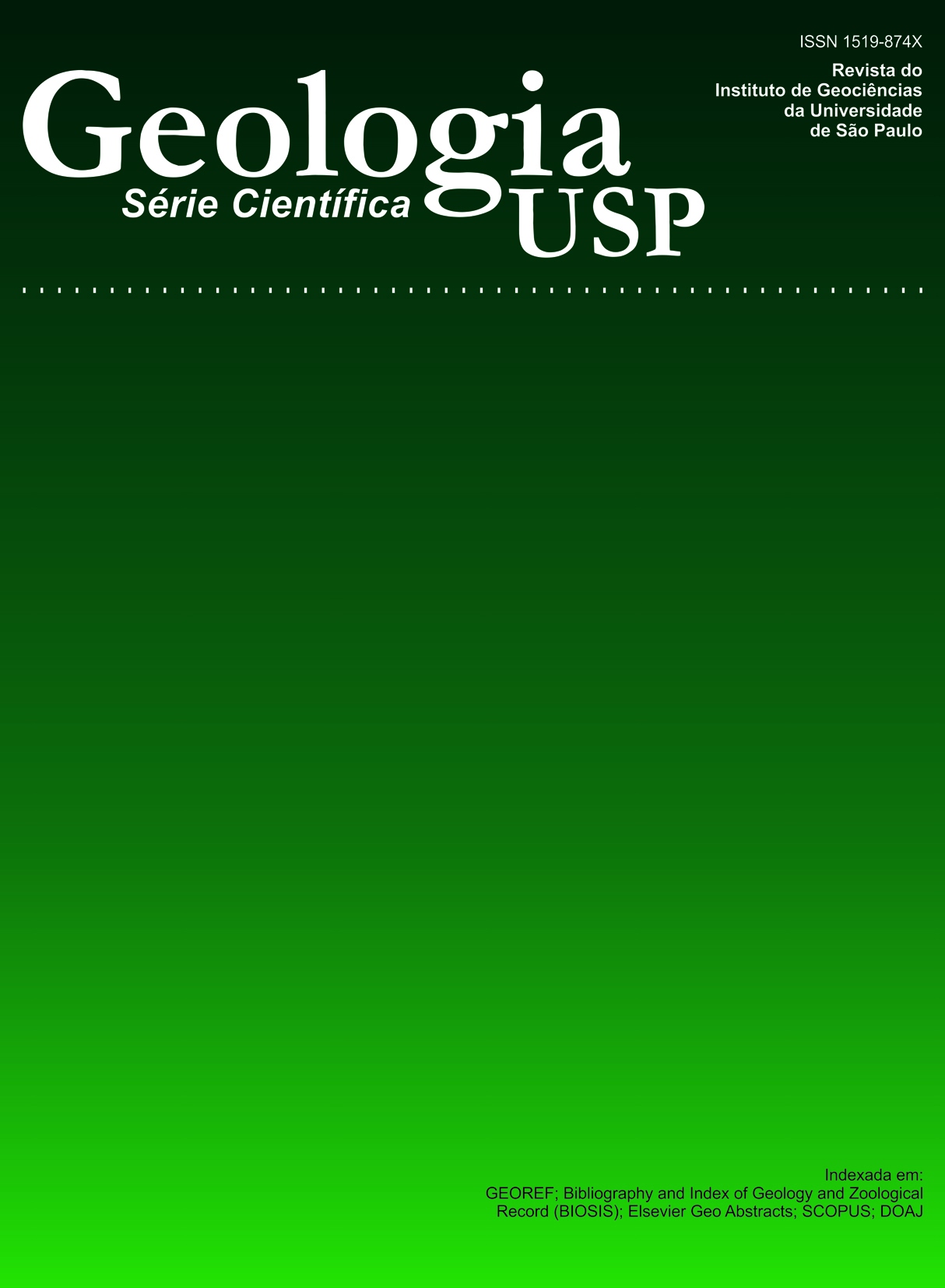The alkaline Intrusion of cananéia on the south coast of São Paulo State: geology and geochronology
DOI:
https://doi.org/10.5327/Z1519-874X2008000200004Keywords:
alkaline magmatism, geochronology, CananéiaAbstract
New radiometric ages (Ar-Ar and Rb-Sr) are available for the alkaline rocks from the Cananéia massif in the so-called Ribeira Valley, which is represented by two small bodies (Morro de São João, 1.8 km², and Morrete, 0.4 km²). The rocks are syenitic in composition, dominantly intrusive, covered by recent sediments and emplaced into the Precambrian basement of the Açungui Group. From the tectonic point of view, they are associated with the Guapiara Alignment at the northern limit of the Ponta Grossa Arch and intruded into the homonimous province that includes a great number of alkaline centers. Ar-Ar radiometric determinations in biotite indicate an average age of 83.6 Ma for the syenites, not much different of that given by a Rb-Sr reference isochron on whole rock for different lithologies which yielded an age of 85.6 ± 2.7 Ma, and an initial 87Sr/86Sr ratio of 0.70667 ± 0.00014 (MSWD = 1.14). The data confirm the inclusion of the Cananéia massif within the age group of the Late Cretaceous alkaline occurrences.Downloads
Download data is not yet available.
Downloads
Published
2008-10-01
Issue
Section
Articles
License
Authors who publish in this journal shall comply with the following terms:
- Authors keep their copyright and grant to Geologia USP: Série Científica the right of first publication, with the paper under the Creative Commons BY-NC-SA license (summary of the license: https://creativecommons.org/licenses/by-nc-sa/4.0 | full text of the license: https://creativecommons.org/licenses/by-nc-sa/4.0/legalcode) that allows the non-commercial sharing of the paper and granting the proper copyrights of the first publication in this journal.
- Authors are authorized to take additional contracts separately, for non-exclusive distribution of the version of the paper published in this journal (publish in institutional repository or as a book chapter), granting the proper copyrights of first publication in this journal.
- Authors are allowed and encouraged to publish and distribute their paper online (in institutional repositories or their personal page) at any point before or during the editorial process, since this can generate productive changes as well as increase the impact and citation of the published paper (See The effect of Open Access and downloads on citation impact).
How to Cite
Spinelli, F. P., & Gomes, C. de B. (2008). The alkaline Intrusion of cananéia on the south coast of São Paulo State: geology and geochronology . Geologia USP. Série Científica, 8(2), 53-64. https://doi.org/10.5327/Z1519-874X2008000200004





